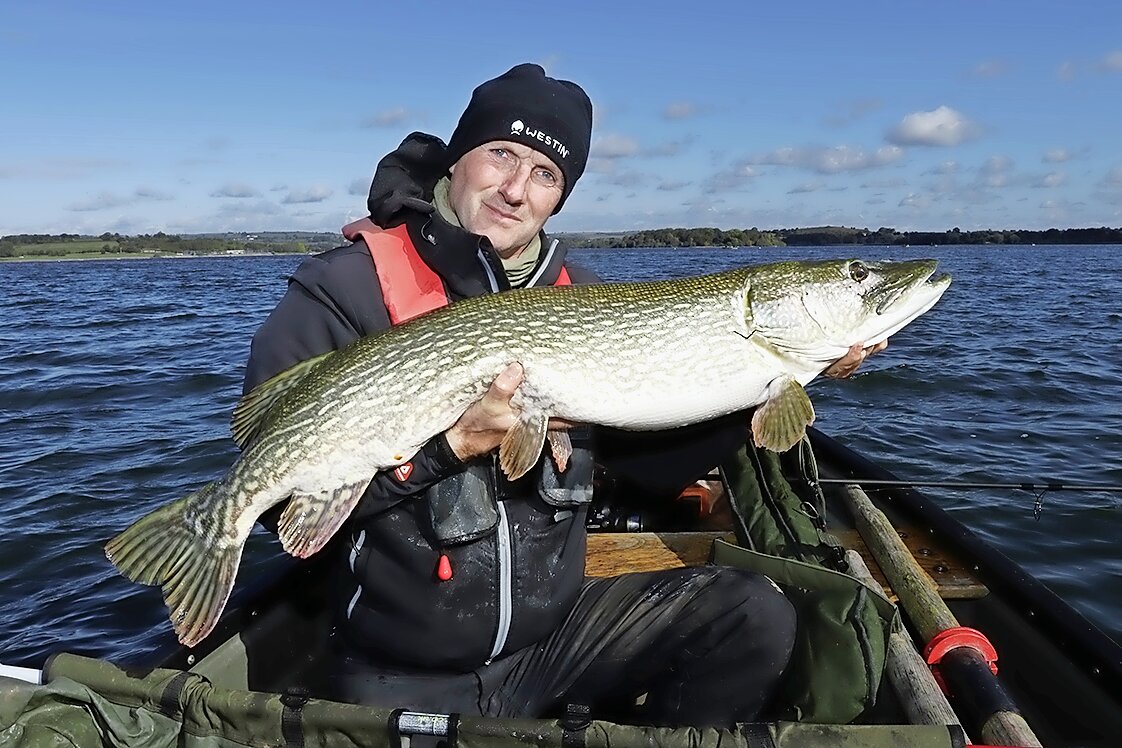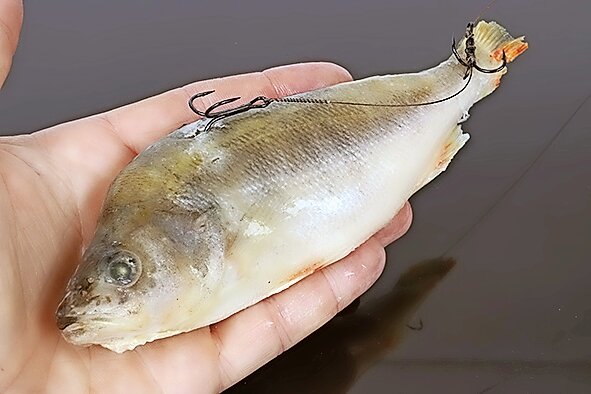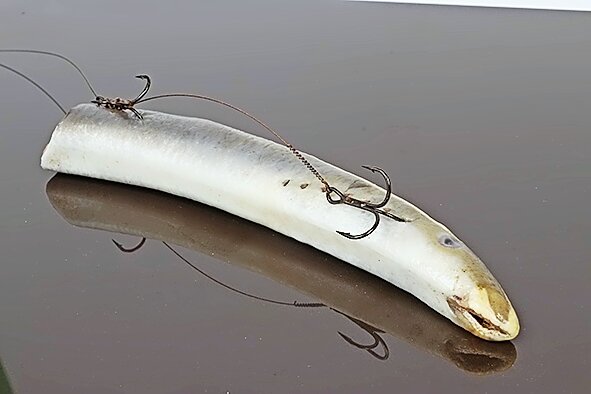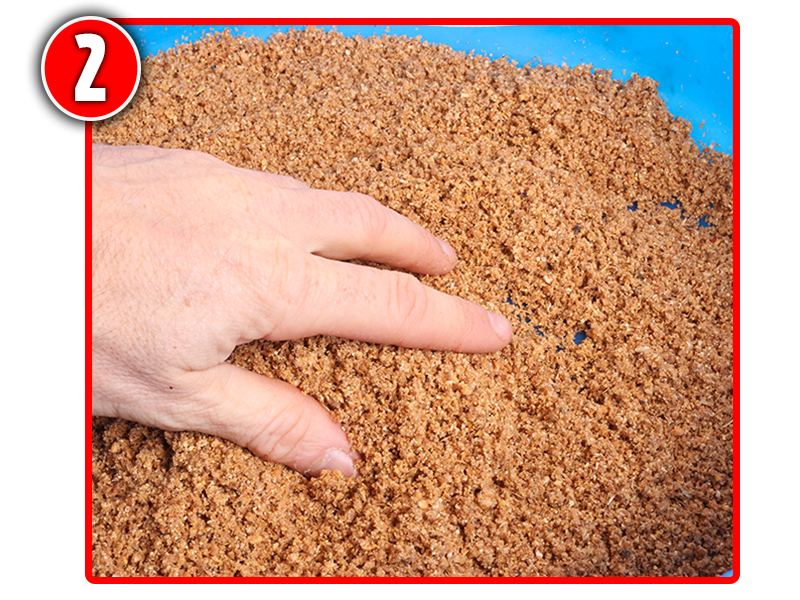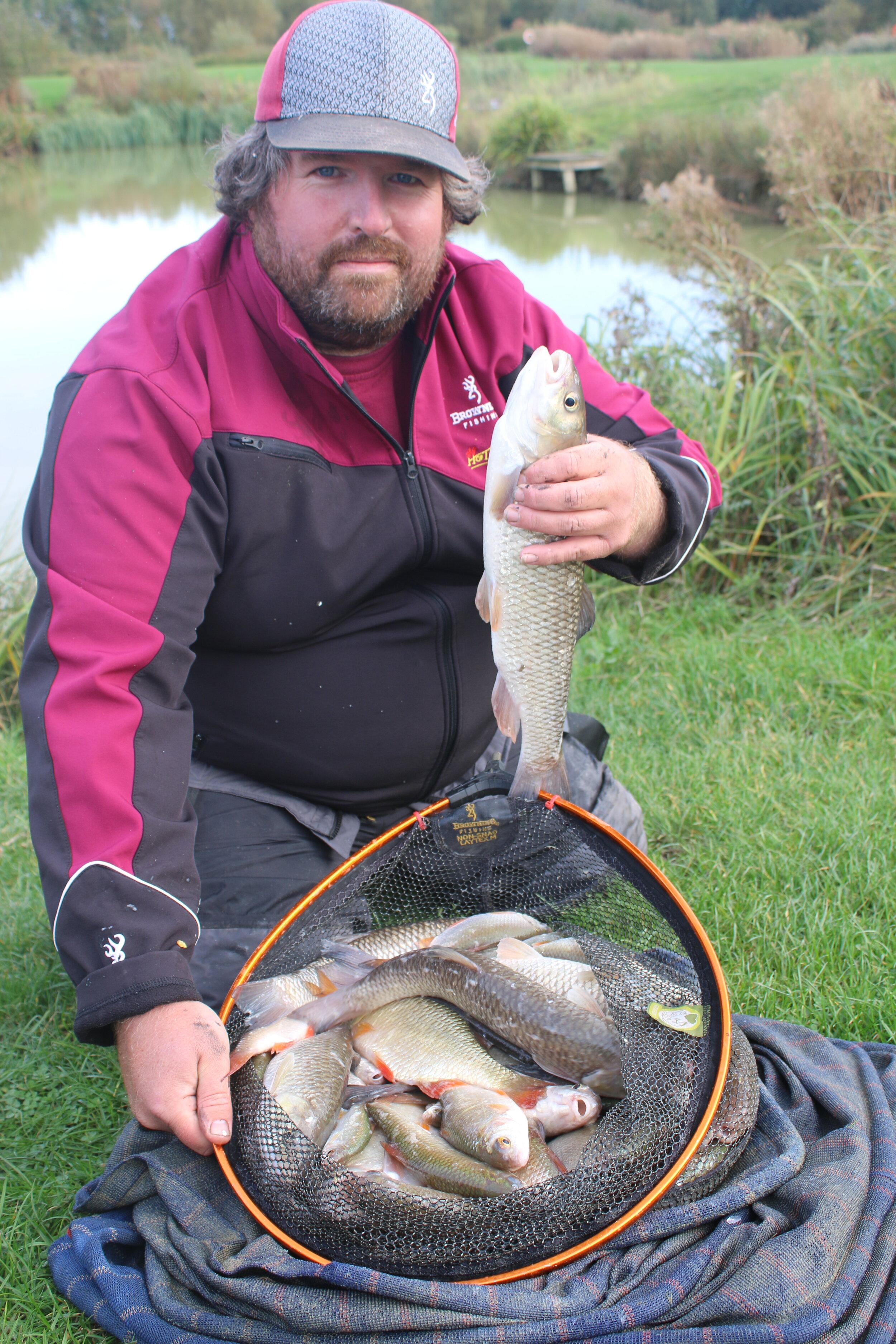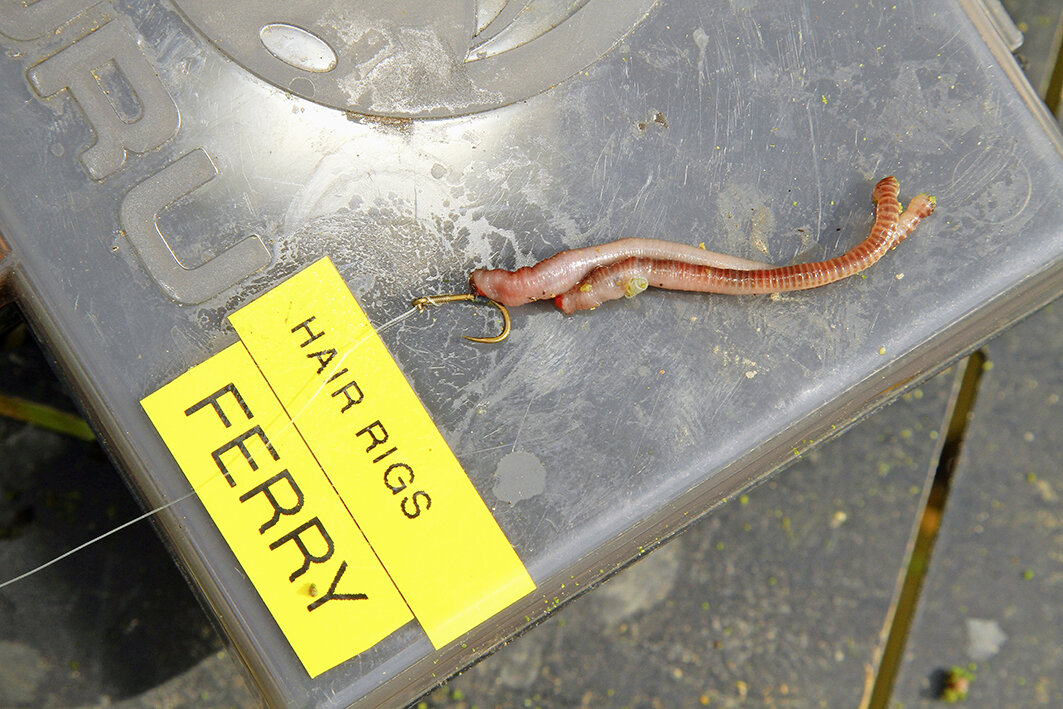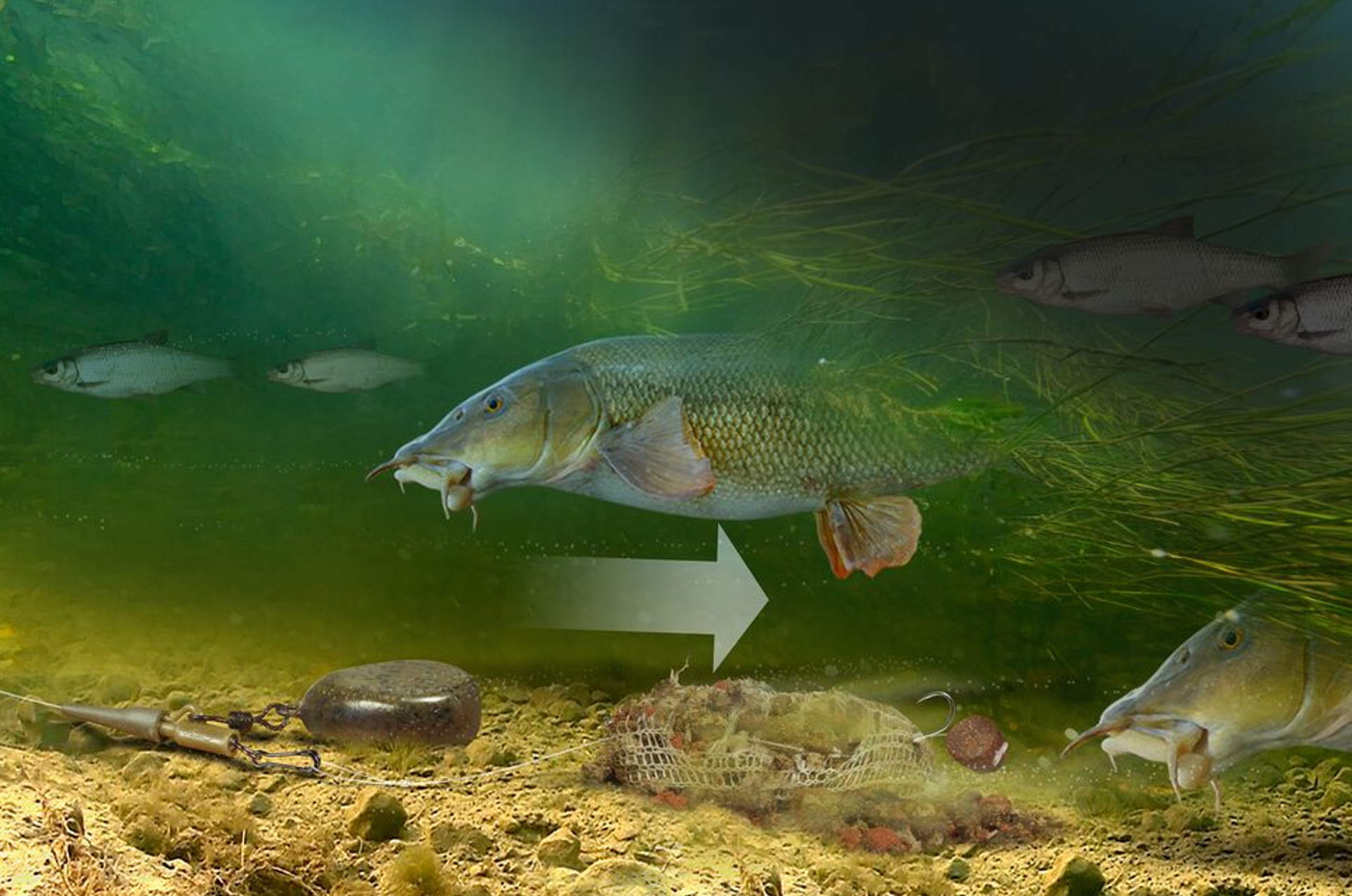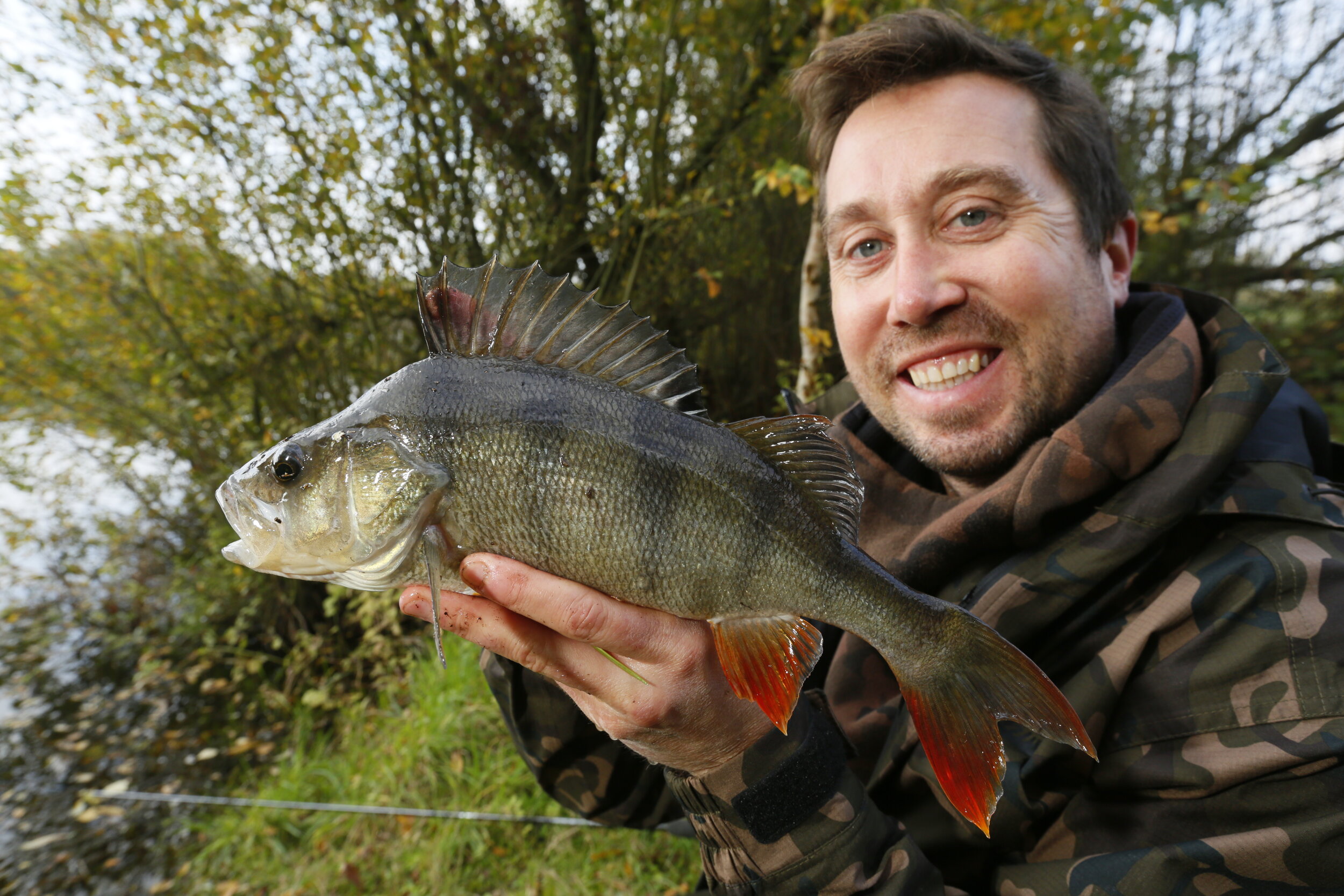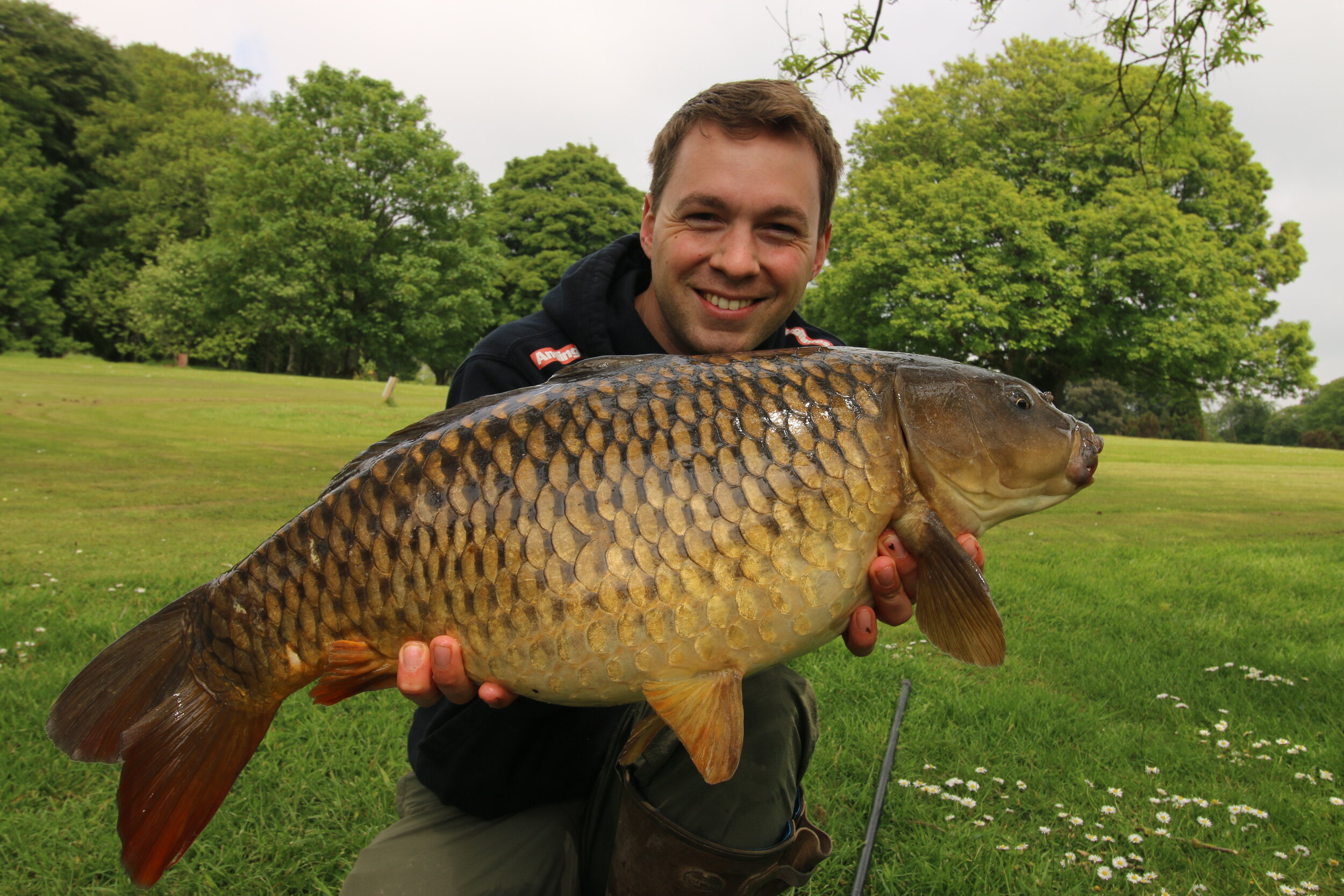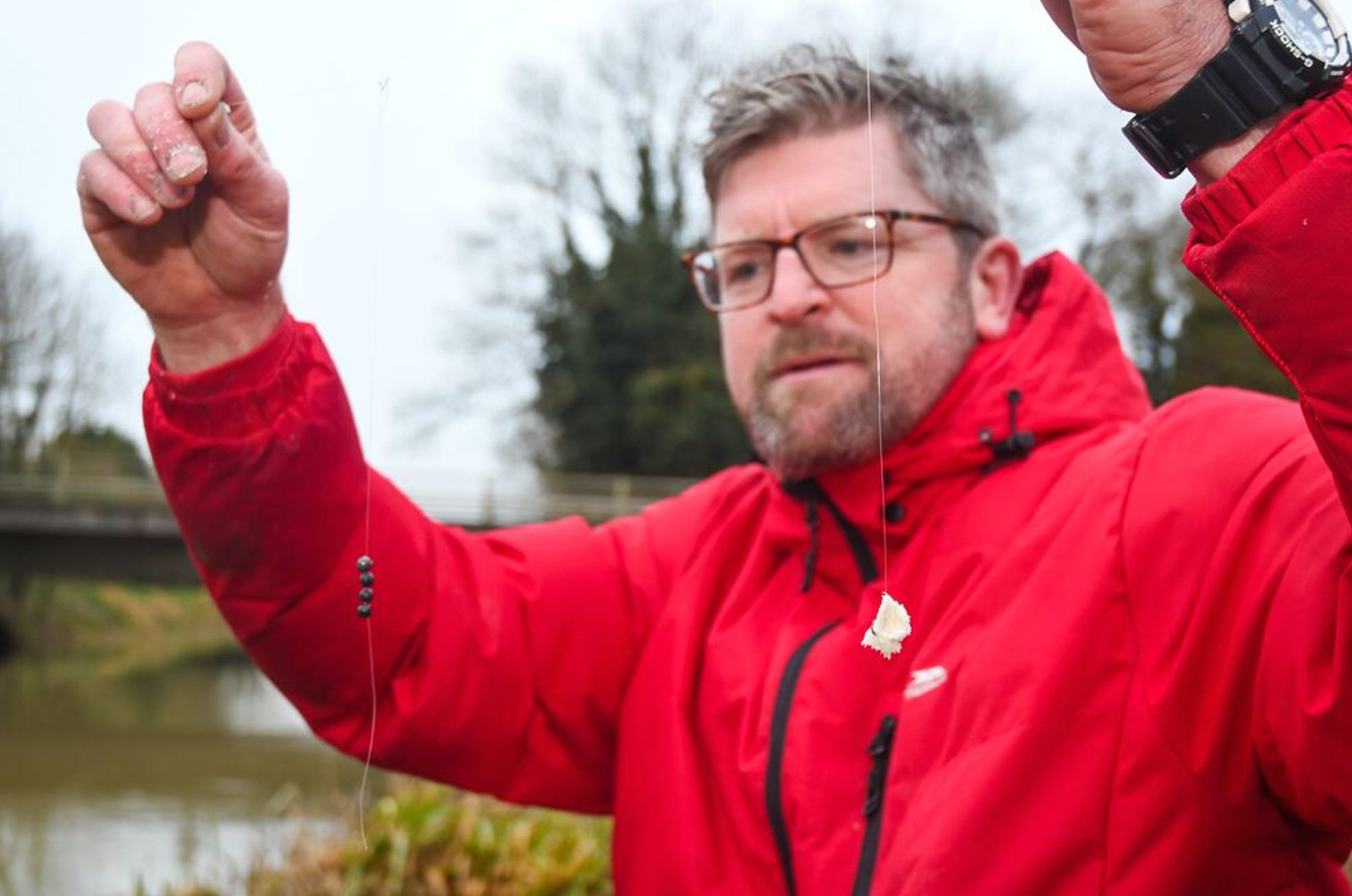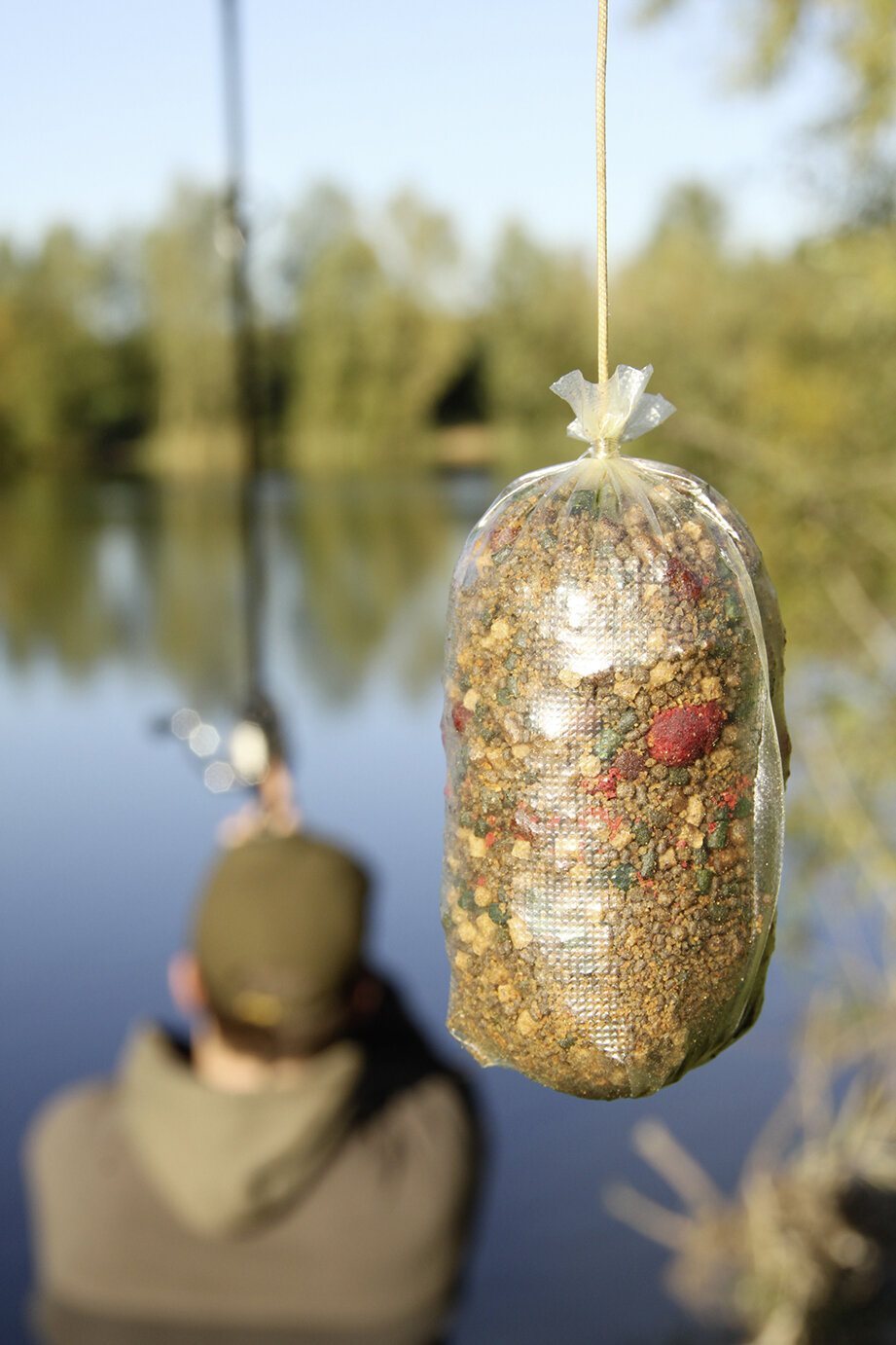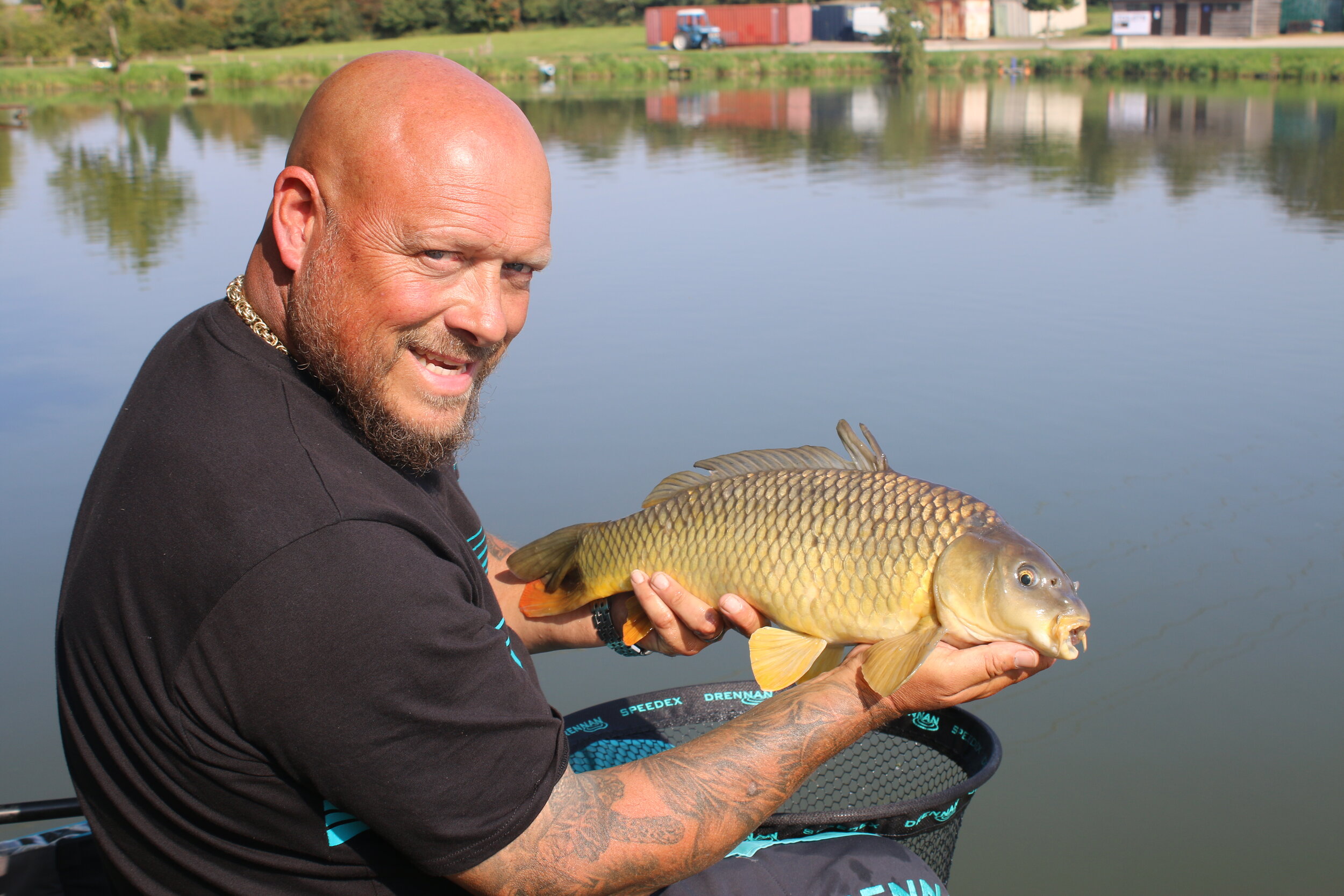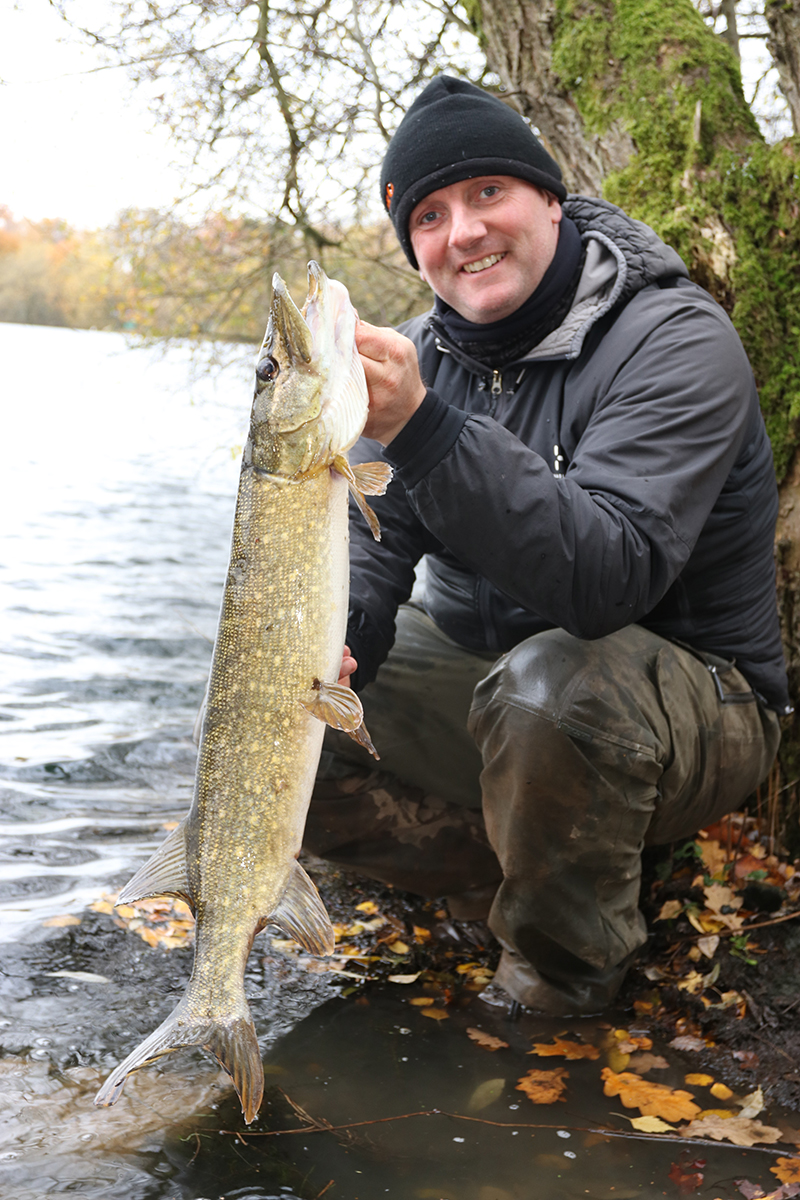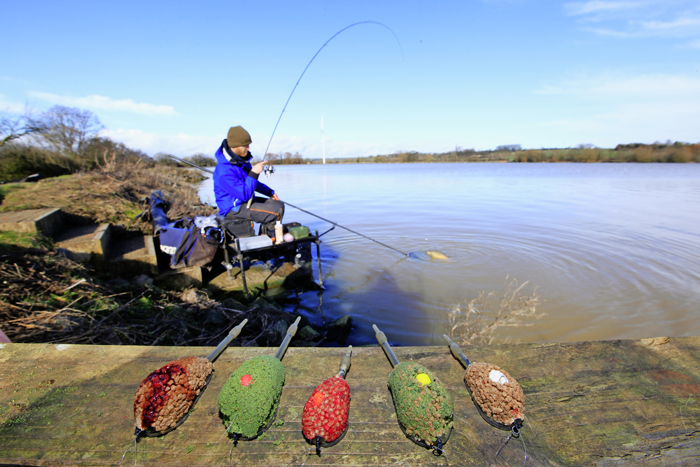Lure Fishing Tips | Lures for big autumn perch - Mat Woods
Early in autumn it’s a case of searching for fish. The best way to cover a lot of water is to pick a shad pattern with a paddle tail. One that I’ve caught loads of perch on is the Quantum Q Paddler in the smallest 8cm size.
A cracking autumn perch
There are lots of colours to have a go with, but I find something that looks like a fish to be most productive, because smaller bait fish like roach are still scattered about and there are a lot of them for perch to eat!
A 3g jig head is perfect for canals
I fish a Paddler with a dark back and silvery sides on a Korum Squirm Head jig head – a 3g head on canals, 5g or 7g for rivers. Heavy jig heads aren’t needed as perch will normally be in slack areas on running water where the flow is much slower.
The lure’s paddle tail causes it to waggle and mimic the swimming action of a wounded prey fish.
Lure Fishing Tips | Busting the jig jargon with Mat Woods
There are lots of ways to present jigs and for those who aren’t familiar with the jargon surrounding the subject, here is what each phrase means in terms of presentation…
Texas Rigging
Using a specially offset hook, you rig the bait so the hook isn’t exposed and fix a small bullet weight on the line with a float stop to create a ‘jighead-style’ profile. Great in weed, snags or in clear water where the fish have wised up to traditional jigging techniques.
Carolina Rigging
Using the same offset hook rigging technique as for the Texas rig, this offers the lure on a hooklength boom that is a few feet away from a running bullet weight. A glass bead by the hooklength swivel creates a ticking noise with the weight that sparks an aggressive response from perch.
Jigging
A normal jighead gets threaded into the lure to leave the hookpoint totally exposed. It’s the purest form of jigging. Matching your lure size to the hook size is really important.
Drop Shotting
This offers a weight at the end of the line, with a hook tied directly to the line above it. It means the bait won’t contact the lakebed, so you can work your lure up in the water. Great in very cold conditions.
Specimen Fishing Tips | How to catch 'picky' pike with Paul Garner
Do pike wise up to deadbaits?
My experience, backed up by some scientific evidence, is that they can, and avoid certain baits. If you are fishing a venue that sees a lot of pressure it can be worth trying unusual baits, or adding oils and dyes to alter their appearance.
There are often a couple of signs to look out for that I think might indicate cautious feeding. If you start getting dropped runs, or fish fall off during the fight, this can be a sign that they are not feeding confidently. Similarly, very gentle bites that only just move the float can also sometimes be from picky pike.
Fortunately, there are plenty of alternative baits to the ‘old faithfuls’ that you can try.
Bluey is a favourite of mine. These large baits are best used chopped in half and their soft, oily texture and bright blue colour make them ideal for pike.
Going natural with a roach, perch or skimmer bream deadbait is also a good idea.
I pick a bait that’s likely to be a big part of the pike’s natural diet, as they will be tuned in to feeding on these fish. Another trick to give you a completely different bait is to use a head section instead of the normal tail. This is particularly good with big mackerel and herrings. It looks different, and the head end also contains more blood, giving more attraction.
How to make a pike fishing groundbait
You can use a wide range of different ingredients in your pike groundbaits, as I am just as interested in attracting silver fish as I am predators.
Chopped and mashed fish are a good starting point, because they match the baits you will be using for pike, but fish oils, pellets, maggots and worms can also be added to draw in the prey fish.
1) To a pint of water add two tablespoonfuls of Winterised Salmon Oil from a tackle shop and mix the additive in well.
2) Slowly add a bag of Method mix groundbait until a stiff consistency is reached. Leave the groundbait to stand for about five minutes to allow the water to be fully absorbed.
3) Next, add a tin of mashed sardines in water (not oil) to the groundbait.
4) Pellets, maggots or worms can also be added to the mix to help attract bait fish.
5) Cut up a few oily deadbaits, such as Blueys or sardines, and add these to the groundbait.
6) Mould the finished mixture into balls and catapult four of these around each pike float.
How to catch pike on a day-ticket water!
The country’s carp waters are a largely untapped resource for pike anglers and top specimen hunter Paul Garner cashes in on the apex predators
Over the last few decades thousands of gravel pits have been developed as carp fisheries, leaving the other species there virtually neglected. Many of these lakes contain hidden gems that rarely, if ever, succumb to a boilie and bolt-rig approach, none more so than pike, which often live almost unnoticed in many carp fisheries.
As we all know, pike thrive on neglect. It is, therefore, no wonder that there is now some great sport to be had for the enterprising angler who targets these venues. Many carp fisheries operate on a day-ticket basis, enabling anglers looking for other sport to fish alongside the carp anglers for a few pounds. when the banks are much quieter, there is plenty of room to explore the untapped potential of these waters.
One such venue is Sandhurst Lake, set amid the historic Yateley complex in Hampshire. This shallow gravel pit is well known for its stock of more than 400 carp to 40lb-plus, but the other fish residing here are less well known. After hearing a whisper of some great pike sport to be had, Paul Garner decided to investigate its predator potential.
Travel light
As the sky slowly begins to lighten, Paul surveys the surface of the flat-calm gravel pit looking for the tell-tale dimpling of small bait fish.
He believes this is essential for a successful day’s piking. “The water is just about at its coldest right now, but that doesn’t mean the fish are inactive. On most lakes you will find them shoaled up tight in just one or two areas. Through the day you would never know they were there, but at first and last light they will become active and can be spotted dimpling and rolling. Where the bait fish are concentrated the pike are unlikely to be far away, so it is really important to try to find the bait fish before you start.
“You will also tend to find that the wind will drop at the start and the end of the day. This makes spotting bait fish so much easier than when there is a chop on the water.”
Unfortunately, it is one of those mornings when the bait fish haven’t read the script and, as the sun rises above the horizon, Paul has still seen no signs of their presence, apart from the occasional fish in the middle of the lake. With little to go on, he decides to start fishing as the pike are likely to have a feeding spell in the early morning.
“If I don’t see any signs of bait fish, then my first port of call will be any areas with lots of features, such as overhanging trees, reedy margins, inflows, or snaggy areas. All these are possible holding features and are worth fishing. Normally, if there is a pike present I will get a take pretty quickly, so I will only stay in a swim for an hour before moving. This might sound like a lot of effort, but often the pike will be mainly in one area and I need to find them, rather than wait for them to come to me.
“Travelling light is essential for this style of fishing. All I have today is a small Nash rucksack carrying my tackle, two made-up rods, a small coolbox containing my deadbaits, a large unhooking mat that doubles as a seat, and a big landing net. I can pack up and move swims in minutes, covering lots of water even on a short winter’s day.”
Float fishing
With no trace attached, Paul sets the stop-knot above his float at about six feet and underarm casts to a distance of four rodlengths. He draws the rig slowly back towards the margins, feeling for weed as he goes. After two more casts, he is ready to start fishing.
“The lake is very weedy and actually quite shallow for a gravel pit. There is less weed in the margins, which is the ideal place for a pike to patrol anyway, so I am really pleased that I can fish this close in. Spending five minutes dragging the rig around is time well to check depth and assess weed growth.”
Hooking on a large smelt, Paul clips on his trace and lowers the rig into the margins, just a rodlength out. The process is repeated with the second rod, only this time a herring is cast a little further out to the edge of the weed.
After an hour without a bite, Paul unclips the traces and puts them in his coolbox before loading up his gear and moving to the far end of the lake. Here there’s a line of overhanging trees forming a canopy over the margins of the lake. Finding the water here to be slightly deeper, Paul pushes up the stop-knots on his rigs so that the floats are set at dead depth.
“Using floats not only tells you the depth of the swim, but they are also more sensitive than legering deadbaits and waiting for the alarm to go off. I use sensitive and slim pencil floats with highly visible tops, which I can see at long range. A take is normally signalled by the float lying flat before moving off as a pike picks up the bait and swims away.”
Paul explains the thinking behind his simple float rig. “Of course, you always have to use a wire trace when pike fishing. I never drop below 30lb test wire, as a slight kink may weaken the wire significantly during the fight. Just as important, though, is to use an uptrace above the weight, as this eliminates any chance of a pike catching the line and biting through it. I like to use a 30g weight semi-fixed to the swivel joining the two traces to give enough weight to stop the bait being dragged around, even on a windy day. The hook trace is then attached using a cross-lock swivel, so I can remove it instantly if I want to move swims, or to make unhooking a pike easier.”
Chance conversation
Another hour passes and, despite his best efforts, Paul remains fishless. However, a chance conversation with a passing carp angler has Paul quickly packing away his gear and preparing to move. Apparently, the carp angler has spotted several pike cruising along the margins in front of a swim in the middle of the lake and the area is full of small roach, too.
“That’s enough information for me.” declares Paul, as he gets on the move. “If you get wind of pike then move straight away. While we might not think of pike as shoal fish, they often congregate in certain areas of a lake, so I really can’t over emphasise how important it is to keep moving until you find them.”
Ensconced in his new swim, Paul carefully swings both baited rigs into the margins. The weed is much thicker out in the lake, which probably explains why the pike are patrolling the clear channel in the margins.
After only 10 minutes the left float twitches, sending tiny rings in all directions. Paul picks up the rod and, as the float falls flat and then starts to move off, he winds down and lifts into the first pike of the day. After a spirited fight, a beautifully-marked eight-pounder is resting in the landing net.
Within minutes, the other float is sliding across the lake surface and another nice fish is soon on the bank after spending a good proportion of the fight airborne! A third fish follows soon after, before the swim goes quiet. Despite changing baits and twitching them to try to induce a take, no more fish follow and it is obvious that the short feeding spell has either finished or the pike have moved off.
Paul soldiers on, but it eventually becomes clear that three fish will be the final tally. “Unfortunately no bigger pike have shown today. I have heard of fish to over 20lb being caught here this winter, and the carp angler in the next swim has spotted some bigger fish today. Still, to catch three cracking pike on my first visit is still a good result.
“Had I stayed put in my first swim I would certainly have been more comfortable, but would have blanked. Staying mobile was definitely the right plan, as I had no idea where the pike would show up today. It might be harder work, but I have learned a lot about the features in the lake – useful information for future sessions.”








